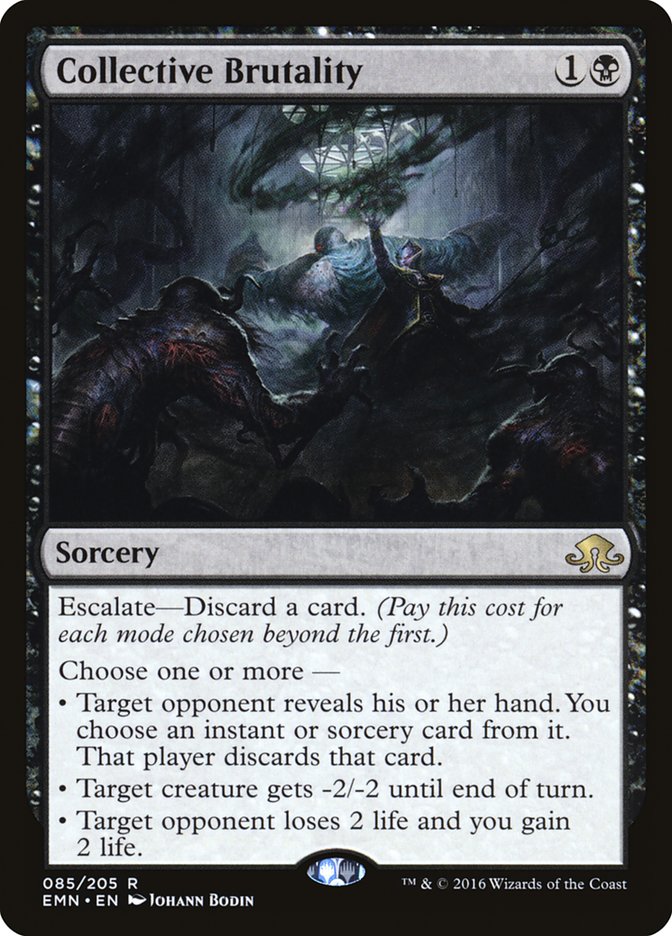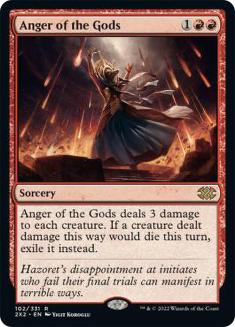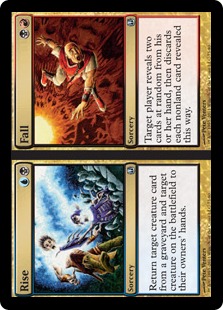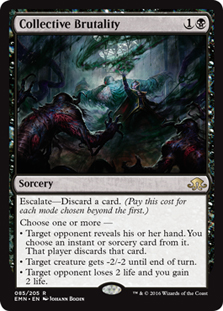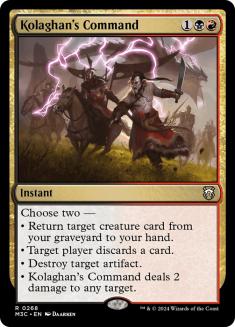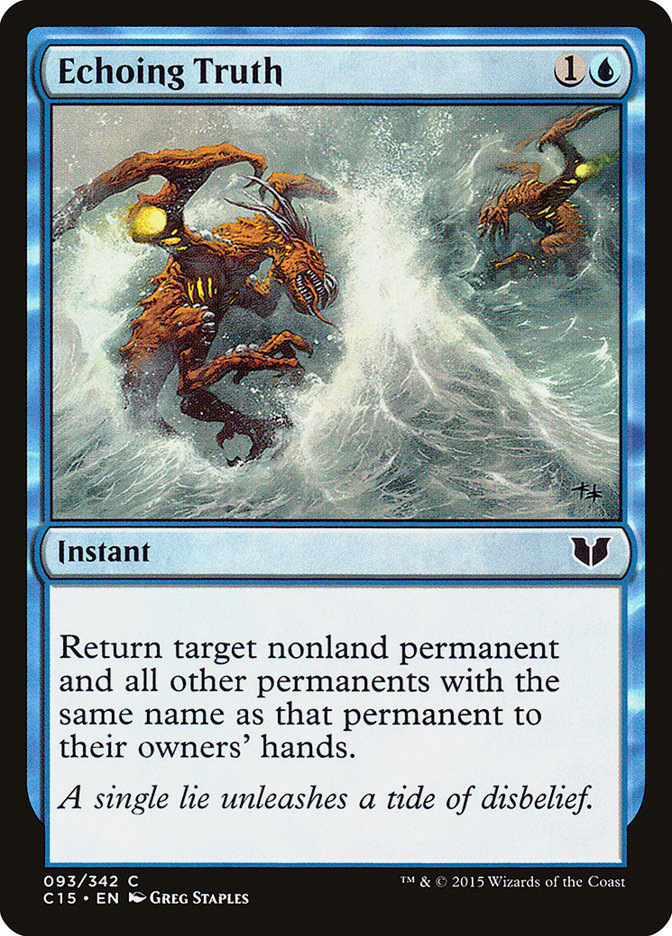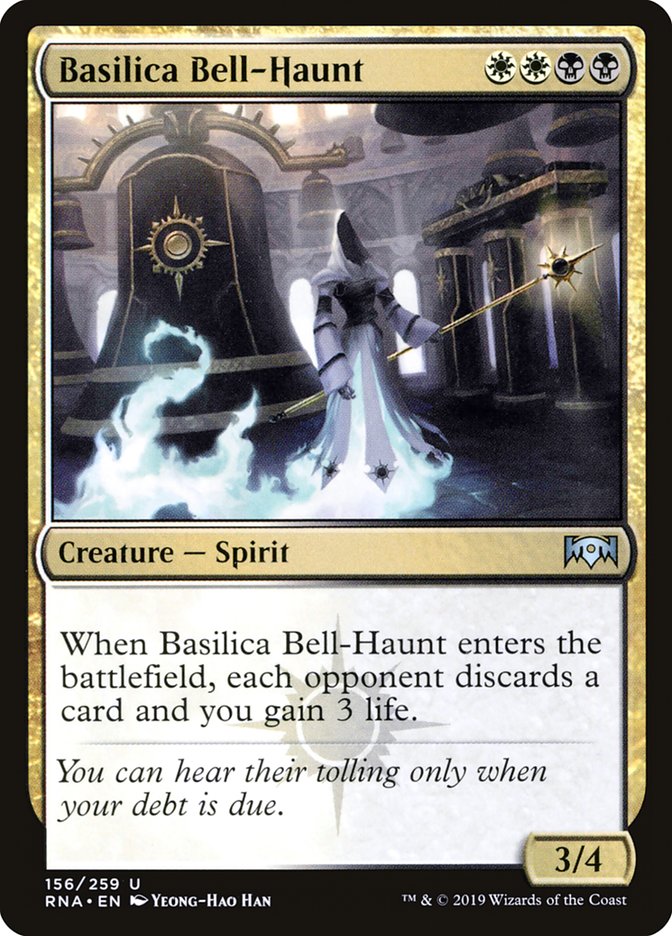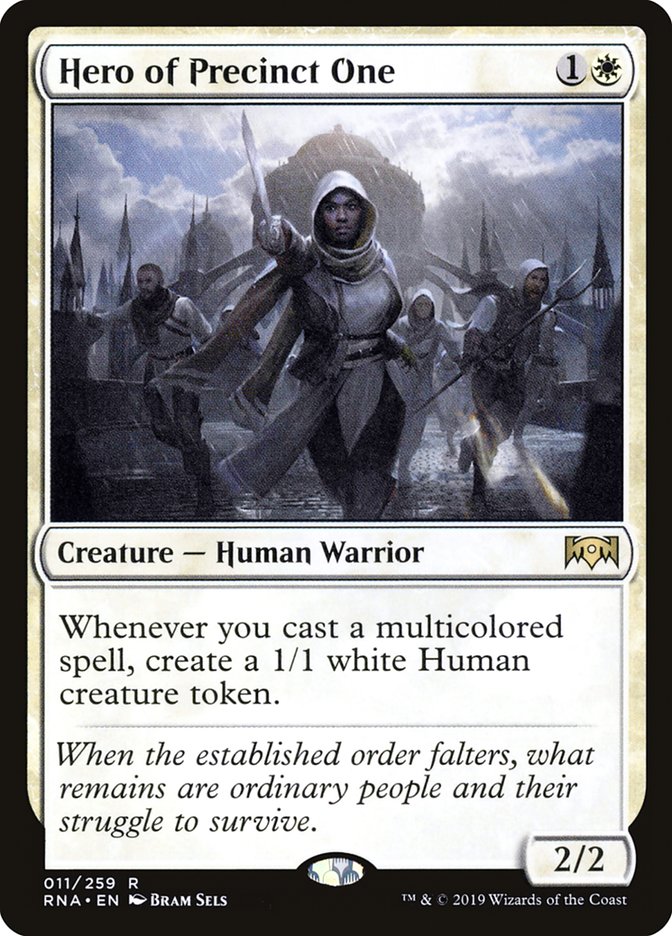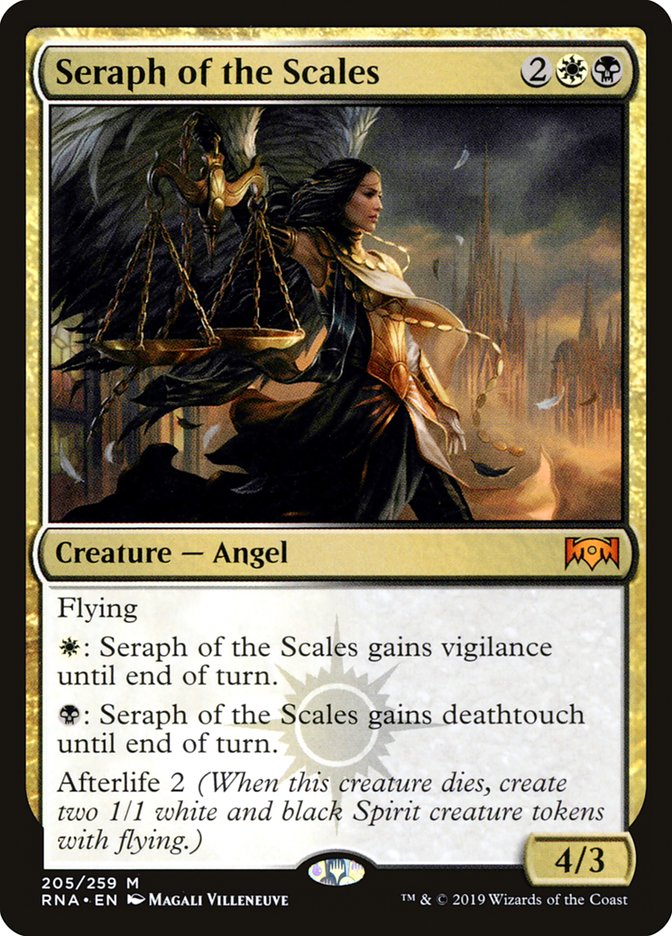I had a great, slightly self-indulgent, contrived introduction at the ready when I realized there’s a good chance you’re reading this, my regular debut for Star City Games, and you don’t know who I am. It seems necessary to clear that up before I can discuss some Magic with you.
My name is Kevin Jones, I’m 31 years young, and I’m a longtime Magic player from a small town in New York called Kingston. I’m known for some awful punts on camera and building a few blue decks that ended up being pretty good. Provided that I can do this adequately, you’ll see me every other week here on SCG. I’m very excited for this new opportunity and I hope we can learn together. I’ll grow as a writer and you’ll hopefully grow as a player, if even a little. Thank you for reading this. I hope it’s the start of an awesome routine for all of us.
What is a Gold Pro supposed to act like?
What is a Gold Pro supposed to look like?
How do they prepare?
How do they think?
The preceding passage would have been the introduction to this article had I accrued three Pro Points this weekend in Tampa. It would’ve been immediately followed by some modicum of humility that would read something like, “I have achieved the goal I set for myself but I don’t feel any different.” However, we’ve run into a curious problem. I only have 34 Pro Points, and thus I am not Gold and I don’t know the answer to these questions that were supposed to be rhetorical.
I drove seventeen-and-a-half hours from New York to Tampa Bay for the express purpose of securing the final three Pro Points I needed to reach a Pro Level that I previously thought I was essentially asymptotic to. I could try as I might, but I wouldn’t ever quite perform well enough to attain this Constructed benchmark. My tournament ended with an anticlimactic 3-3 finish and it felt like a normal weekend of scrubbing out; they happen to all of us who play competitively. I had to remind myself how important this was. The truth is, we all know what we sign up for week in and week out. Needing a 12-3 and actually getting it is incredibly tough. I recognized failure was a totally possible, even rather likely, outcome. But despite it being a yearlong quest, the failure didn’t make me hate Magic, at least not after the initial tilt cloud evaporated.
I’ve always wanted to write one of those introspective but still analytical “What Went Wrong” pieces. I’ve tried a few times but I don’t think it ever turned out right. I won’t do that here because I’ve got an event this weekend to look ahead to. However, Roshen Eapen, a friend and a player on the team I manage, smashed Tampa with the same deck I played, so I’ll take a look at his list and some of the differences, in addition to pointing out what I may have done wrong. If you’re looking for Standard decks, scoot to the end and I’ll briefly touch on what I’m looking at for SCG Cincinnati.
The Difference Four Cards Can Make
Creatures (14)
Lands (16)
Spells (30)

This list is the brainchild of Ben Jones, a Welsh Death’s Shadow specialist and Grand Prix champion. Ben posts his decklists and sideboard guides on Twitter and his content helped me pilot Grixis Death’s Shadow to tenth place at SCG Columbus earlier this year with Kellen Pastore and Andrew Davis. I can’t speak highly enough of Ben and his insights in a general sense.
If I could go back, though, I would play Collective Brutality for sure. Burn is a very popular deck and drawing one of your copies of that card almost always wins you a close match. Rise // Fall is also good against Burn, but it doesn’t move the needle quite far enough and is much harder to cast without dealing yourself additional damage.
Anger of the Gods is fantastic against Dredge and that’s another matchup that can be incredibly tight and hinges on you drawing one of a few different cards. That said, it’s a hard card to cast in this deck and I now think the two copies in the sideboard are unnecessary and I would replace them with Collective Brutality and/or Kolaghan’s Command:
Out:
In:
One interesting thing about sideboard cards in Grixis Death’s Shadow is that they’re subject to interesting splash damage, especially if they’re grindy graveyard-based cards. Rise // Fall and Liliana, the Last Hope are both amazing in grindy matchups like Golgari Midrange and Jeskai Control, among others, as the propensity for one-for-one trading makes both cards incredible in these attrition wars. Fall does a great job of minimizing the opportunity cost of including the card in your sideboard, as you can always cast it and try to take two cards from them if the graveyard actions get shut down.
Generally, opponents will bring in some sort of graveyard hate cards against you, but most opponents are correct in not sideboarding a very focused card like Surgical Extraction. However, if they have more general hate like Nihil Spellbomb, Rest in Peace, and Relic of Progenitus, those are definitely coming in against you to slow down cards like Gurmag Angler.
For example, Azorius Control oftentimes has access to Rest in Peace (sometimes even in their maindeck) so I like sideboarding in Rise // Fall there because it can be a grindy matchup where you must let some of their removal or counters resolve. It can be awkward when your card that’s supposed to serve as a two-for-one barely does anything, and the same goes for Liliana, the Last Hope, since the card gets much worse when its only function is the ultimate, but sometimes that’s just what needs to be done to give yourself the best chance at victory.
To wrap up the discussion regarding my awful tournament, I’ll just say that I won’t blame the deck. I think Grixis Death’s Shadow is still quite good and Roshen Eapen’s fantastic run at Grand Prix Tampa illustrates that when you practice and understand a deck as well as he does, you can crush people with it.
Creatures (14)
Lands (16)
Spells (30)

Roshen has deviated slightly from what one would consider a stock Grixis Death’s Shadow decklist. He’s been playing primarily Death’s Shadow decks for over a year, so I generally assume there are valid reasons why his deck is constructed the way it is. Instead of two Rise // Fall, one Hurkyl’s Recall, and one Lightning Bolt, Roshen has one Echoing Truth; one Collective Brutality; a second Liliana, the Last Hope; and a Ceremonious Rejection.
The Echoing Truth is worth touching on because not only is it an out to multiple Ensnaring Bridges – just like Hurkyl’s Recall is – but it can be sideboarded in against other things as well. Selesnya Hexproof is an example of a deck where the Echoing Truth can come in and be useful where Hurkyl’s Recall wouldn’t do anything.
Slightly less narrow sideboard cards are great for a deck like Grixis Death’s Shadow because it has enough velocity to find its one-ofs. Slight upgrades over maindeck cards are nice because you have a variety of things to look for and each one can be better than the other, depending on the situation. Your games are often quite polarized because of the high power level of your threats and the huge number of discard spells you play. It can be a case of “I close the game if I can deal with this one thing they have that slipped through,” so Echoing Truth is a good card to cast the turn you kill them and I like this type of “good topdeck in a tight window” card in a deck such as Grixis Death’s Shadow.
The second Liliana, the Last Hope is a hedge against Humans and the mirror while also being cognizant of the uptick in Golgari Midrange decks recently. It’s tough to get rid of all the interaction Golgari-based decks have against you, so adding more threats, especially ones that mostly ignore Fatal Push, Terminate, or Liliana of the Veil, is a solid gameplan.
It’s interesting how synergistic Liliana is with the post-sideboard plan of Death’s Shadow against Golgari. You really want to ensure that you don’t get run over by Scavenging Ooze and you often kill it on sight. You’re also often forced to let something you cast die because discard spells need to take the real parity-breakers like either version of Liliana, the aforementioned Ooze, and Tireless Tracker. Stubborn Denial gets trimmed because you’re less worried about trying to get to four mana so you can protect Liliana. Instead, you’re jamming things at each other in a weird broken game where both players are low on resources and the first unanswered haymaker often takes over. Unsurprisingly, either Liliana is unbelievable as a topdeck in these games.
I would like to use this opportunity to say that my hesitation regarding multiple copies of Rise // Fall is entirely validated by the champion’s choice to eschew them. However, integrity matters to me and I cannot lie – Roshen told me he would’ve played Rise // Fall if he could’ve acquired two copies to play with. They were very tough to find on site Friday and Saturday in Tampa and his failure to plan ahead secured him a Grand Prix trophy. I don’t know anyone else who has ever won a tournament after an avalanche of poor decisions like missing flights or being late, but if you’re curious, you can ask Izzet Phoenix aficionado Ross Merriam, as he may have some interesting things to say about a certain player who is “never punished.”
Looking Ahead
Gerry Thompson used to write a column on this very website many years ago called One Step Ahead. The title always felt cool to me and the content was obviously great too, but the title was sweet because I always wanted to be one step ahead and Gerry actually was (this isn’t me trying to see how many names I can drop in my first article, I promise)!
This is pertinent now because my near-miss at Gold has me gazing at the SCG Tour Leaderboard. Season One has been dominated by a handful of players who started the year relatively unknown, and this is where I tell everyone reading how I legitimately think these players are one step ahead.
- Ethan Gaieski has played the best deck in any event he has played in in 80% of the tournaments he’s played over the past year and change and I don’t think I know a player that works harder than he does.
- Tariq Patel has a great mind for the game and is so humble and I often walk into The Bearded Dragon to find Tariq playing Magic Online with a stack of medical textbooks surrounding him. He’s always asking others their opinion so he can see the different perspectives and I feel honored when he cares what I have to say. It’s commendable to see someone with such little free time still work hard to improve at something that requires such constant upkeep.
- Abe Corrigan played circles around me at an Open in 2015 when he was probably fifteen years old. I knew his ascension was only a matter of time, but unfortunately for Abe, Mantis Rider carried me anyway in that one.
I don’t mention these players and their successful processes to shout out my friends and acquaintances; I mention them because I see their success as no accident. This is how you get ahead on the SCG Tour. It’s strange to feel so far behind when I was so far ahead in the past. They’re all sitting in that spot where I’ve so often resided. I’ve won or placed in the Top 3 of numerous seasons of the SCG Tour in 2014, 2015, and 2016, and after coming up short on being Gold, I think it’s time to come back home.
I hope I’m not too late to make a run at the 2019 Players’ Championship and I’m motivated by these guys who have really worked hard and crushed it. Seeing my friends like Ethan, Tariq, and Roshen have such success makes it hard to be so bummed that I swung moderately hard at Gold and missed. When I think about all the events I didn’t attend, I guess the way to keep the metaphor accurate would be to say I took a few too many called strikes before I actually swung.
I digress, though. There’s only one direction to look and that’s forward.
SCG Cincinnati is this weekend, and Philadelphia ringers Ralph Betesh and Andrew Davis have conscripted me to play Standard for them. I say “ringers” because they’re not incredibly well-known outside the Northeast. Ralph is a Grand Prix champion with Abzan Company during Eldrazi Winter and has a few other GP Top 8s on his resume, while Andrew is in the Top 16 of the SCG Tour Leaderboard and is one of the most dedicated and talented control pilots in the area. I’m honored to squad up with these guys for the weekend, and here are a few of the decks I’m considering for the event, with a brief explanation as to why I like each one.
Creatures (22)
- 2 Hostage Taker
- 2 Lyra Dawnbringer
- 3 Thief of Sanity
- 4 Deputy of Detention
- 3 Seraph of the Scales
- 4 Basilica Bell-Haunt
- 4 Hero of Precinct One
Planeswalkers (2)
Lands (24)
Spells (12)

In order to illustrate truly how slept on I find this deck to be, you only need to check out that timestamp – January 26th. Standard moves super-fast because of the two highly competitive online clients where you can play. Often the Grand Prix- or SCG Tour-winning deck is outdated before the winner’s interview, so you might find it odd that I am advocating being a step ahead and suggesting a deck that’s two months old and completely absent from the metagame. Well, I think that there are a few reasons Esper Midrange could be a good choice.
The first one is that it plays a couple of cards that are very good against Mono-Blue Aggro, the de facto best deck and the winner of Mythic Championship Cleveland in the very capable hands of Autumn Burchett. Thief of Sanity is naturally great against Mono-Blue, but Hero of Precinct One is also great because you can advance the battlefield even if your creature gets countered. In SCG events you’ll often see a lot of aggressive decks, especially because paper Standard hasn’t come all the way back yet, so people in the Standard seat play whatever they have. Mono-Red Aggro or Gruul Aggro has a tough time with Basilica Bell-Haunt, a card this deck plays in high numbers. The bodies provided by Hero and the enters-the-battlefield abilities can give fits to Azorius Aggro as well.
The second reason why I like Esper Midrange is because there plenty of disruptive elements throughout its 75. You can give various Nexus of Fate decks and Esper Control enough trouble Game 1 to steal it and then you get way better after sideboard with plenty of copies of Duress, Negate, and the like.
This deck’s biggest drawback is that the mana can be awkward. It plays a ton of clunky things and has trouble casting multiple spells in one turn. Generally, I hate decks that have these problems, and if I play this deck this weekend, my list would look wildly different from the one Wyatt Darby registered in Indianapolis a few months ago.
Like Darby, I would be interested in Seraph of the Scales, since it also gives Mono-Blue Aggro fits and is great against most removal. Mortify is also incredibly well-positioned and is a great removal spell to play when the best combo deck plays several enchantments. But there’s another 1WB card that I like that hasn’t seen enough play – Kaya, Orzhov Usurper. Kaya gives you a great threat/answer against Mono-Blue Aggro while also shoring up the matchup against Izzet Drakes, a deck I would imagine gives this one some trouble. I probably won’t pull the trigger on Esper Midrange, but I certainly think the deck is underrated right now.
Creatures (17)
Spells (43)
- 19 Island
- 4 Opt
- 1 Negate
- 3 Spell Pierce
- 1 Entrancing Melody
- 1 Chart a Course
- 4 Dive Down
- 4 Curious Obsession
- 4 Wizard's Retort
- 2 Essence Capture
Sideboard

The main reason I won’t likely be jamming Esper Mana Symbols.dec is because I’m sort of obsessed with Mono-Blue Aggro. Autumn’s winning deck from Mythic Championship Cleveland is a hard one to pass up, and while I wouldn’t play their exact 75 (mainly because I think the metagame has moved fast enough to force some evolution within the archetype), I wouldn’t change much.
To justify this sentiment, I would first point to Jody Keith’s Rakdos Midrange deck as an early indicator of the shift. Alex Majlaton’s Gruul Aggro deck also plays a pile of cards you don’t want to see, with Goblin Chainwhirler and Runaway Steam-Kin topping the list. The uptick in Rekindling Phoenix and The Chainwhirler has led me to add another copy of Essence Capture and I’ve trimmed on Mist-Cloaked Herald as another hedge against these red-based decks. There’s not a ton more to say about Mono-Blue Aggro because everyone has essentially written about it by now, but if I had to submit my list for SCG Cincinnati this moment, it would look like this:
Creatures (18)
Spells (42)

I’ve added a twentieth land because you want to be able to commit threats and leave open mana more often now and you’re also using lots of mana in post-sideboard games with things like Entrancing Melody and Surge Mare. The increase in big creature midrange decks led to the 3/1 split between Negate and Disdainful Stroke, and Transmogrifying Wand is a little better than Deep Freeze against exactly Niv-Mizzet, Parun. The rise of Temur Reclamation suggests this is a smart split and I still plan to bring the one Deep Freeze in against Rekindling Phoenix decks, so I don’t want to cut it entirely.
New Beginnings
While I may have come up short in Tampa to reach Gold Pro status, there are still plenty of opportunities for me to experience success. SCG Cincinnati is my first step for trying to quality for the Players’ Championship again and I welcome the challenge. Hopefully I don’t strike out looking!


